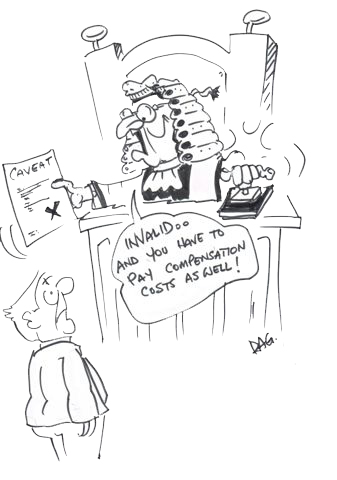Landgate has a simple process for the preparation, lodgement and acceptance of caveats. As a result, caveats are commonly lodged against titles to land without obtaining legal advice.
Although it is relatively simple to lodge a caveat in a form acceptable to Landgate, there are a number of matters that need to be considered prior to preparing and lodging a caveat. Failure to consider these matters may result in the lodgement of an invalid caveat that does not protect the caveator’s interest and exposes the caveator to a compensation claim.
Landgate review
Landgate will accept a caveat if the caveat form has been completed properly and a supporting document or declaration has also been lodged.
It is a common misconception that caveats accepted by Landgate are valid.
Landgate does not make a determination as to whether the caveator truly has a ‘caveatable interest’ or otherwise has lodged a valid caveat. Such questions will only be considered by the Supreme Court of Western Australia if the caveat is challenged.
Important considerations
Caveatable interest
The primary question to be considered before a caveat is lodged is whether the caveator has a ‘caveatable interest’.
A range of interests in the relevant land are sufficient to support the lodgement of a caveat.
Such interests include:
The determination of whether an interest is sufficient to support the lodgement of a caveat can be complex.
Type of caveat lodged
The most commonly lodged caveats are:
The choice of the type of caveat to be lodged is very important, given lodgement of an absolute caveat in circumstances where only a subject to claim caveat is required to protect the caveator’s interest, may result in the court declaring the caveat invalid and ordering it to be removed (and perhaps also an order requiring the caveator to pay compensation to the landowner).
As a general proposition, an absolute caveat should only be lodged by a person:
In the absence of such an express contractual right, a tenant or mortgagee should only lodge a subject to claim caveat.
Expression of caveator’s claim
Care must be taken in describing the estate or interest that the caveator claims in relation to the land.
A purchaser that incorrectly claimed an interest in the land as ‘in fee simple as purchaser’ could not maintain its caveat on the title. The Supreme Court judge held that the description of the purchaser’s interest in the land was incorrect and that there was no power in the Transfer of Land Act 1983 (WA) for the court to amend the interest claimed in the caveat. The operation of the caveat lapsed as a result.
A purchaser should describe its interest in the land as ‘purchaser of an estate in fee simple’ or ‘as equitable owner under a contract for sale’.
For an option to renew in a lease to be protected by caveat, specific reference to the option to renew must be made in the caveat.
Address for notices
The caveator’s address for notices stipulated in the caveat should be considered and updated as required.
Any lapsing notice issued by Landgate at the request of the landowner (or other registered interest holders) will be sent to this address. If the caveator does not take court action to substantiate its right to maintain the caveat on the title within 21 days of the notice (or 14 days in the case of less common forms of lapsing notices), the caveat will lapse.
It is critically important for the address of the caveator noted in the caveat to be current. Otherwise, the caveator may not have an opportunity to defend its right to maintain the caveat. A caveator’s address for service of notices can be updated by a simple application to Landgate.
Summary
Getting a caveat lodged against a title is simple.
However:
should be carefully considered. Failure to do so may mean that the caveat does not protect the caveator’s interest in the land or even exposes the caveator to a compensation claim for lodging a caveat without reasonable cause.
For more information on caveats, please contact:
| Peter Beekink | Tim Morgan |
| Partner | Associate |
| (08) 9288 6751 | (08) 9288 6838 |
| peter.beekink@lavanlegal.com.au | tim.morgan@lavanlegal.com.au. |

